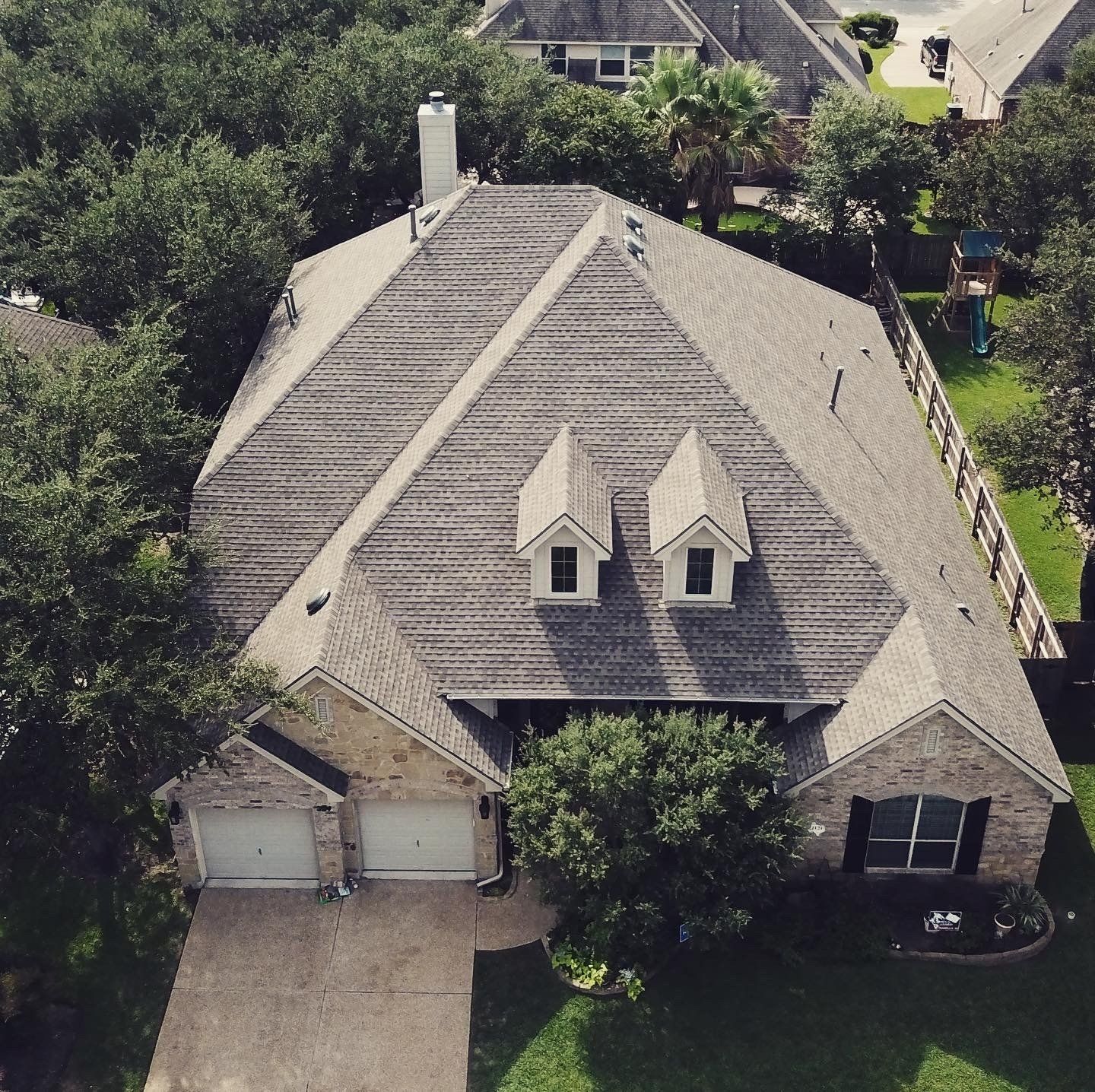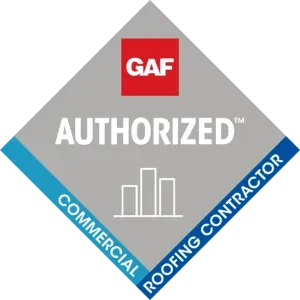Common Roofing Problems in Texas: Dealing with Extreme Heat, Storms, and Hail
The Lone Star State is known for its unique charm, diverse landscapes, and unpredictable weather. While Texans take pride in their state's resilience, the extreme climate conditions that come with it can pose significant challenges for homeowners. One of the most important components of any Texas home, the roof, often takes the brunt of these challenges.
This blog will explore some of the most common roofing problems that Texas homeowners face due to the state's distinctive weather patterns. From the scorching heat to the bone-chilling cold and the perilous hail that all threaten the integrity of your roof, we aim to shed light on the issues that matter most to those living under the Texan sun. Whether you're a lifelong Texan or a recent transplant, understanding and addressing these roofing concerns is crucial to ensuring your home's long-term durability, safety, and value.
Birdcreek Roofing has been Helping Texas Homeowners for 10 years and we are here to help you!
1) Extreme Heat and Its Effects on Roofing
One of Texas homeowners' toughest challenges is the scorching heat, particularly during the sweltering summer months. The sun beats down relentlessly, and this unrelenting heat can significantly impact the longevity of your roof.
Characteristics of the Texas Climate:
Our central Texas climate is generally characterized by high temperatures and arid conditions. Triple-digit temperatures are all too common, and the unrelenting sun can turn roofs into veritable ovens. This extreme heat can be particularly harsh on roofing materials.
Effects of Prolonged Exposure to High Temperatures:
Here are some of the primary ways in which extreme heat can impact your roof:
- Roof Warping: As temperatures soar, your roofing materials, particularly asphalt shingles and flat roofing membranes, can become susceptible to warping. Excessive heat can cause these materials to bend and distort, leading to a warped appearance and a compromised ability to protect your home.
- Thermal Expansion: Roofing materials expand and contract with temperature changes. The expansion can strain the roof's structure and materials when exposed to extreme heat. This expansion and contraction cycle can eventually lead to cracks, gaps, and weakened seams in the roofing system, especially as your roof ages.
- Heat-Induced Damage to Shingles: Shingles can suffer from heat-induced damage. Excessive heat can cause shingles to become brittle, leading to cracks and fractures. Over time, this can result in leaks and a reduced lifespan for your roof.
- Increased Energy Costs: Extreme heat can also impact your home's energy efficiency. Roofs that absorb and retain excessive heat can lead to higher indoor temperatures, increasing the workload on your cooling system. This may lead to higher energy bills and stress your roof's structural integrity.
The cumulative effects of extreme heat on your roof can lead to costly repairs and a reduced lifespan for your roofing materials. Scheduling regular roof inspections and maintenance with Birdcreek Roofing is essential to combat these challenges.
2) Storms in Texas and Their Impact on Roofs
Texas is renowned for its intense thunderstorms, complete with lightning, heavy rain, and strong winds that can put the durability of your roof to the test. These severe weather events can lead to a range of roofing problems. In addition to these thunderstorms, the Lone Star State sees its share of torrential downpours, especially during the rainy season, challenging your roofs' ability to manage water effectively. Rapidly escalating wind speeds during storms can also cause substantial damage to roofs.
The effects of these severe storms on roofs can be multifaceted. They may result in leaks due to compromised areas, potentially leading to interior water damage. Strong winds can lift and damage roofing materials, such as shingles and flashing, exposing roofs to the elements and presenting safety concerns. Furthermore, severe storms can lead to shingle displacement, compromising the roof's protective capacity and aesthetic appeal.
3) The Menace of Hail in Texas
Unfortunately, hailstorms are not just occasional nuisances in Texas; they are a common and significant weather phenomenon. Texas ranks among the top states in the U.S. for the frequency and severity of hailstorms. These storms are most prevalent during the spring and summer when warm, moist air collides with cold fronts, creating the perfect conditions for hail formation. The size of hailstones can vary, ranging from small pellets to golf ball-sized or even larger, causing widespread concern for homeowners. These hailstorms can result in costly roof damage, making it essential for Texas homeowners to be prepared.
Hail Damage to Roofs:
The impact of hail on roofs can be devastating. When hailstones plummet from the sky at high velocities, they strike the roof's surface with immense force. This force can cause a range of damage to roofing materials, including:
- Dents: Hailstones can leave behind dents on shingles, metal roofs, and other materials, compromising their integrity and aesthetic appeal.
- Cracks: The impact of hail can create cracks in roofing materials, allowing water to infiltrate and potentially lead to leaks.
- Holes: In severe cases, hailstones can bore holes through roofing materials, exposing the underlying structure to further damage.
The severity of the damage often depends on the size and density of the hailstones, the angle of impact, and the type of roofing material. Even relatively small hail can cause issues if it strikes at the right angle or with enough force.
The Importance of Hail-Resistant Roofing Options:
Given the frequency and severity of hailstorms in Texas, homeowners should consider hail-resistant roofing options. These materials are designed and tested to withstand the impact of hail and reduce the risk of damage. Hail-resistant roofing options are typically rated based on their ability to withstand hail impact, with Class 4 being the highest rating. These materials often have reinforced layers or impact-resistant coatings that help disperse the force of hailstones, preventing or minimizing damage.
Your
Birdcreek Roofing consultant will review these options with you.
4) Preventative Measures and Roof Maintenance
Next, we'll explore some practical tips and strategies to safeguard your investment and the importance of regular roof inspections and maintenance. We'll also suggest proactive steps to maintain your roof's longevity and resilience.
Tips and Strategies for Roof Protection:
- Choose the Right Roofing Material: Opt for roofing materials well-suited to the Texas climate. For instance, cool roofing solutions are engineered to deflect a greater amount of sunlight and retain less heat, rendering them a smart selection for countering intense heat.
- Invest in Impact-Resistant Roofing: Consider hail-resistant roofing materials, especially if you live in an area prone to hailstorms. These materials are designed to withstand hail impact and reduce damage.
- Proactive Storm Preparedness: Keep an eye on the weather forecast, and when severe storms are predicted, take preventive measures like securing loose objects in your yard to prevent them from being blown onto your roof.
- Regular Roof Inspections: Schedule routine roof inspections with Birdcreek Roofing at least twice a year to detect and address minor issues before they become significant problems. Professional roof inspections can identify potential trouble spots and damage caused by extreme weather.
The Significance of Regular Roof Inspections and Maintenance:
Regular roof inspections are essential to roof maintenance, as they can help identify minor issues before they become major problems. Your Birdcreek Roofing consultant can assess your roof's condition, identify damage signs, and recommend necessary repairs. By investing in regular inspections, you can extend the life of your roof, prevent costly repairs, and ensure that your home remains well-protected.
Proactive Steps for Homeowners:
- Clean Gutters: Keep your gutters clean and free from debris. Clogged gutters can lead to water overflow, damaging your roof. Regular gutter cleaning can help prevent these problems.
- Trim Overhanging Branches: Overhanging tree branches can pose a risk to your roof during storms. Trim branches that could fall onto your roof and cause damage.
- Ensure Proper Attic Ventilation: Adequate attic ventilation is often overlooked but absolutely crucial for regulating temperature and moisture in your attic space. This can help to prevent heat-related damage to your roof and reduce the risk of moisture-related issues like mold and rot.
- Quickly Repair Damage: If you notice any damage to your roof, whether it's missing shingles, leaks, or visible signs of hail or storm damage, take immediate action to address the issues. Neglecting issues may result in more substantial and expensive repairs in the future.
Protect Your Roof Today!
Proactive measures and regular maintenance are the keys to preserving the integrity of your roof in the face of extreme heat, storms, and hail. If you're getting a new roof, consider investing in impact-resistant options and stay proactive during storms. Routine roof inspections are vital for early issue detection. Keep gutters clean, trim overhanging branches, ensure proper attic ventilation and promptly repair any damage you notice. Schedule an inspection with a Birdcreek Roofing consultant today to assess your roof's condition.
Talk With a Roofing Consultant
Fill out the form below and one of our roofing consultants will be in touch with you within 24 hours.
Blog Page
Main Office
2608 N. Main St, Ste B-313
Belton, TX 76513








